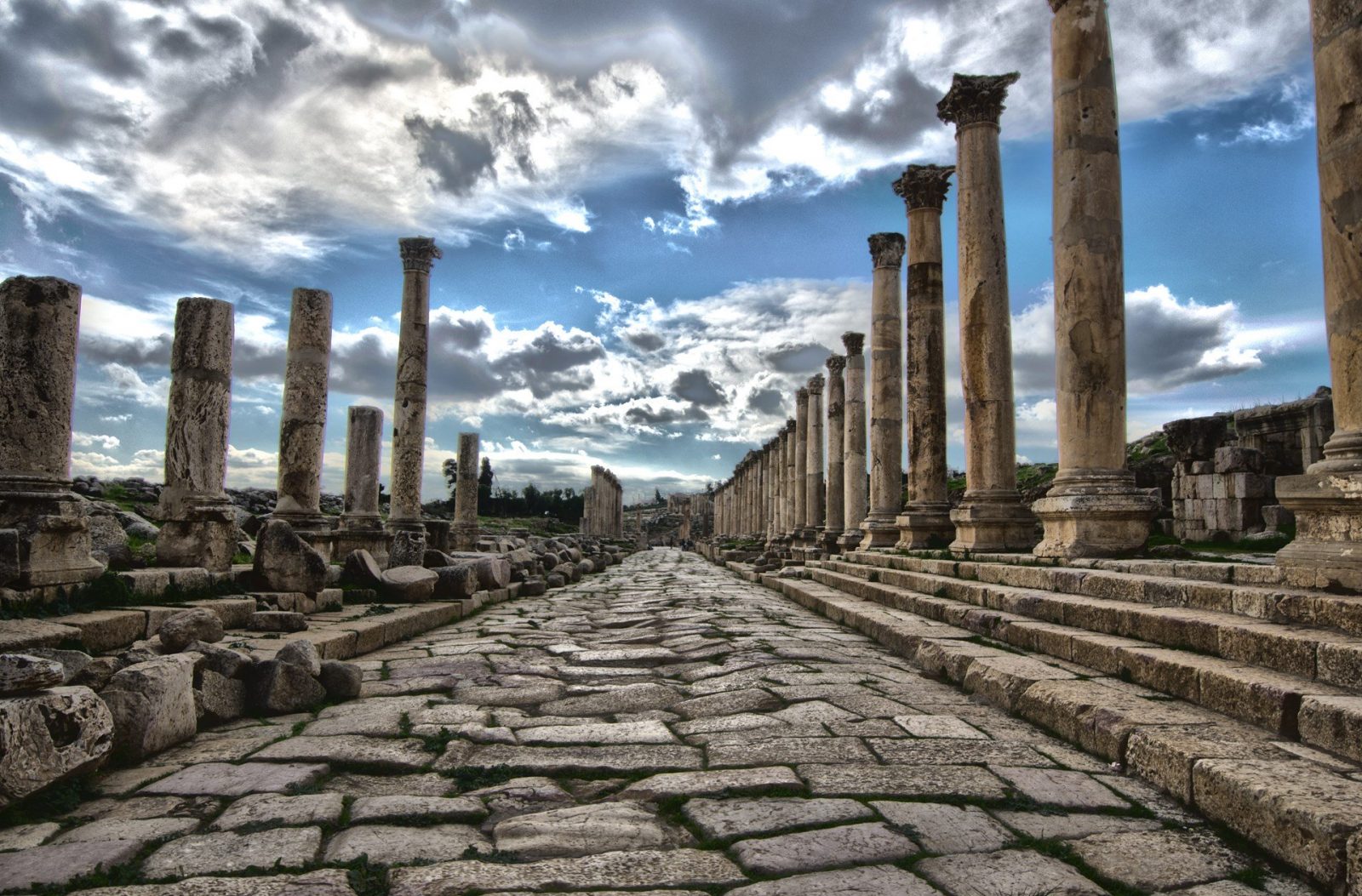Table of Contents
Ancient Roman Roads were developed during the Roman Civilization among which some are still in existence.
~ Roman roads were built with lime concrete and stone blocks of considerable thickness.
Examples: Via Popillia, Via Appia, etc
1. Features of Ancient Roman Roads
The main features of the Roman road are:
~ They were built straight ( with minimal slope or without slope).
~ They were built after soft soil is removed and a hard status was reached.
~ The total thickness of the construction was as high as 0.75 m to 1.2 m.
2. Construction of Ancient Roman Roads

Construction of ancient roman roads was done in the following steps:
a. Excavation of road was carried out until hard status was reached.
b. Subgrade having the thickness of 10-20 cm was prepared.
c. Above subgrade, large foundation stones were laid which were bonded together with the help of lime mortar.
d. At corners, kerbstones were provided.
e. Above the stone foundation; stone chips along with lime mortar were provided.
f. Then a layer of pure lime concrete was provided.
g. At the top; large stone slabs having 10-15 cm thickness were provided.
h. The thickness of such constructed road was as high as 0.75 m to 1.2 m and the width was between 2.2-2.5 m.
3. Disadvantages of Ancient Roman Roads
Some disadvantages of ancient roman roads were:
a. There was no provision for a cross slope.
b. No provision for a drainage system.
c. Use of large foundation stones.
| Read Also: History of road development |

